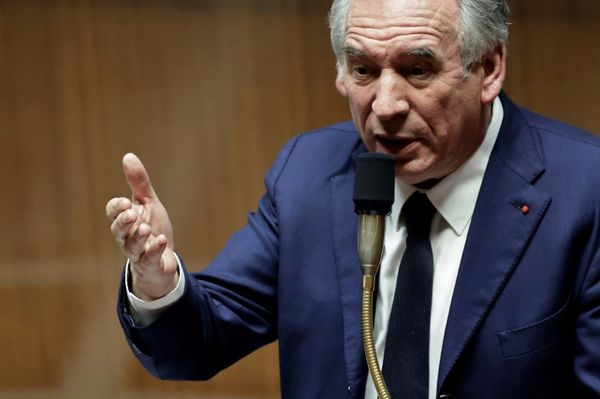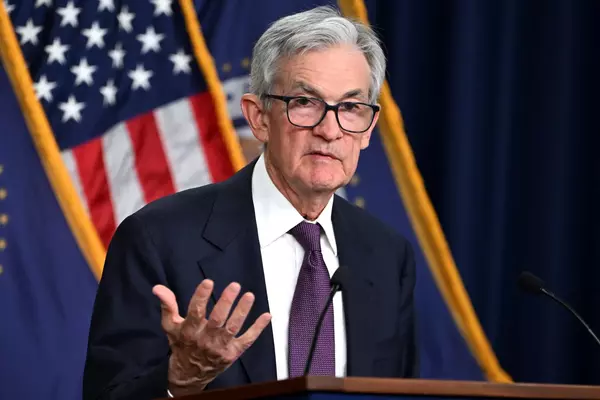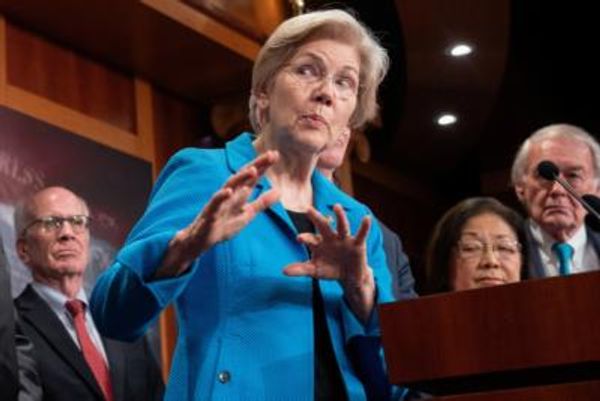
The U.S.-led countries of the trans-Atlantic alliance and their democratic East Asian allies lack a strategy for dealing with their most formidable competitor: China. But the Chinese Communist Party (CCP) has a strategy for dealing with these opponents. Its goal affects everyone’s futures: The CCP wants an international order where it is the rule-maker, not a rule-taker. Given the way Xi Jinping’s regime treats its own people, we should not assume that it will be more benevolent toward outsiders.
The CCP implements this strategy with decisive leadership, as well as a clear-eyed appreciation of and means of exploiting foreign diplomatic, economic, political, and social weaknesses. These “sharp power” tactics include censorship and manipulation of the information system, cyberoperations, leverage of trade and investment, propaganda, and military bluff and intimidation.
The United States and its allies, by contrast, lack leadership and goals. Their approach has for years been based on the flawed assumption that globalization, prosperity, and technology make China more liberal. They underestimated their own vulnerabilities. They refrained from exploiting China’s weaknesses. They prioritized short-term economic benefits over political and strategic considerations. They underestimated the risks of other countries’ engagement with the Chinese party-state. They did not help victims of CCP aggression. They let the CCP set the terms in which China is discussed, depicting criticism as unfounded, malevolent, or racist, and projecting a sense of inevitability. China—so the message goes—will likely be the richest and most powerful country in the world by 2049. Get used to it.
Yet these other countries are not doomed. This is not a conflict of means. It is a contest based on respective capabilities in willpower and coordination. The CCP’s disciplined, long-term approach, imbued by Leninist principles of political warfare, has strengths but also weaknesses. Its opponents’ whole-of-government, whole-of-society, and whole-of-the-world responses are, potentially, far more creative, adaptable, and resilient than anything that China’s party-state can manage. Solidarity and spontaneity are mystifying for those schooled in the CCP’s doctrinal approach to politics and human nature. China has no allies, only clients. Western alliances are real, notably NATO, the most successful military alliance in recent history. Allied democracies can bewilder, distract, and demoralize foes while reenergizing their own systems and institutions with a sense of purpose and shared mission.
This conflict is indeed real and daunting. But it does not need to end in a military confrontation. Nor need it—yet—end in defeat.
The world’s major democracies do not lack resources. They lack the purpose, prioritization, and creativity to focus their resources in a meaningful and effective way. Most of all, they lack leadership. The paradox here is that only the United States has the clout and stature to lead these countries’ efforts to curb the CCP’s influence and channel China’s rise. But the United States cannot lead on its terms alone. It needs alliances and allies, with relations based on compromise, dialogue, and mutual respect.
International leadership was the great failing of the Trump administration. It grasped the CCP’s hegemonic ambitions—but its allergic reaction to foreign entanglements led it to spurn allies and abandon battlefields. Pulling out of the World Health Organization, for example, simply allowed China a still greater influence on global health policy. That President Donald Trump termed the EU a “foe” gravely hampered a trans-Atlantic response to China.
This global anti-China alliance needs a strategy. It would involve decisions about goals, leadership, alliances, and priorities. It must feature new thinking, decisive leadership, and hard choices. Humility will be helpful, both internally and toward the Chinese people. These countries should acknowledge the mistakes of their policy in past decades (and centuries), and welcome China’s recovery from poverty and chaos.
The goal should not be to topple the CCP: The risk of confrontation and chaos is great. Nor can they practice Cold War-style containment. China is too big, too important, and too closely integrated into international supply chains and financial markets. The aim should be to constrain China’s most harmful behavior. The world’s wealthy democracies will not necessarily get a China that they like, but they can aim for a China that they can safely live with.
Effective U.S. leadership carries costs. “America first” cannot be the rallying cry when other countries are being asked to make sacrifices in a common cause. A united industrial policy on countering China’s near-monopolies in rare-earth processing or 5G technology, for example, should be designed not only with cost competitiveness in mind, but also to share the costs and benefits involved.
Initiatives abandoned by the Trump administration, such as the Trans-Pacific Partnership and the Transatlantic Trade and Investment Partnership, should be revisited, with less focus on free trade and harmonization of investment rules, and a greater focus on economic and digital governance. Subgroupings such as the D-10 (a proposed gathering of 10 leading democracies), the Three Seas Initiative (which improves connectivity in Central and Eastern Europe), and the Five Eyes Plus intelligence and political-warfare groupings can all play a part.
The first priority is the preservation of political and cultural freedoms and the independence of democratic legal systems. The Chinese party-state expects the whole world to bite their tongues on issues it deems out of bounds, from genocide in Xinjiang to repression in Hong Kong. That coercion has long been applied to the Chinese diaspora; it is now embedded into the national security law in Hong Kong, which claims to apply to everyone, everywhere, and manifests in the threats wielded against Australia and others that attempt to stand up for the CCP. Open societies should individually and collectively reject this overbearing claim and turn it to their advantage. Resilience in these countries’ political, information, and economic systems is itself a deterrent.
Next is collective action against other CCP intimidation and influence operations, such as its focus on isolating Taiwan. Joint symbolic and practical international action in support of the island democracy is not just a tactical win but a strategic one. It counters the CCP’s projection of inevitability, and it strengthens the best counterexample to CCP propaganda: the existence of a free, prosperous, law-governed “other China.”
The U.S.-led alliance needs well-resourced interagency efforts to push back, for example, against Chinese policy on internet regulation, fisheries, health, and space. These issues have become the lowest priority of these countries’ diplomatic efforts. Instead, they should be the front line, attracting the most able staff, adequate funding, and high-level political attention. Scrutiny of the mechanics of Chinese manipulation is too often at a boutique level. It should be strategic. Government agencies have a role to play here—but so too do civil society initiatives, once armed with greater expertise and focus.
This anti-China alliance also needs to improve its legislative, regulatory, and institutional toolkit. Strategic use of counterintelligence capabilities offers great potential. Public purchasing power can be used to penalize supply-chain fragility (no contracts for companies that are overly dependent on China) and to support alternative providers (for example to Huawei in telecommunications systems).
Third, the world’s democracies need to puncture the climate of impunity. The United Front Work Department runs China’s clandestine and avowed foreign influence operations. Exposing and countering its efforts should be the central tactical goal of all allied efforts.
Intimidatory behavior by United Front agents, for example, should bring firm, prompt responses. Even a partial reaction—expelling an intelligence officer, canceling a trade deal, or withdrawing a broadcasting license—is better than none. The broader and more unexpected the response, the better. China’s opponents need to build their own “united front”: networks between countries and within them, across government, private sector, academic, civil society, and military silos, to enable and ensure collective action against the party-state’s mischief and bullying. Such action reduces its impact and its incidence. These networks should involve individuals and institutions, instigated and sponsored by governments and civil society groups, accompanied by strong public messaging, cybersecurity, legal backup, and intensive support for soft-target individuals such as campaigners, critical academics, and investigative journalists, who are the prime target for CCP harassment.
Fourth, the U.S.-led alliance should exploit the CCP’s vulnerabilities, ranging from its shaky historical legitimacy to individuals in the ruling caste with personal ties to Western countries and other democracies, these states can integrate their cross-border criminal justice, intelligence, and financial regulatory efforts to expose corruption and influence-peddling in CCP weaponized infrastructure projects, for example. Any decision-maker, anywhere in the world, who accepts a bribe from a CCP entity should fear the consequences. So too should their banker, lawyer, accountant, and colleagues. Fixing the democratic world’s corruption and influence-peddling enablers does not just deter China. It also makes the system more efficient and more credible in the eyes of these countries’ voters.
The United States and its allies need to communicate to the Chinese people that their ire is not directed against the citizens but their leaders. A global Chinese-language television channel supported by the world’s democracies is one avenue for this message. Short-wave radio broadcasts are far harder to block than internet-based media and should be revived. But the biggest target is Chinese living abroad. Their media has been easy prey for the CCP, buying up and driving out independent and critical outlets. On this, democratic countries’ home turf, it is easier to compete—and to win. Promoting the study of Chinese history and culture free of CCP control is another. Highlighting global ties with Taiwan and support for Hong Kong dispels CCP propaganda tropes that criticism of China is based on racism. They should also expand broadcasting and social media efforts aimed at Cantonese, Mongolian, Tibetan, and Uighur audiences.
Many of these tactics were strong capabilities when dealing with the Soviet empire during the Cold War. They may seem long forgotten, but the institutional muscle memory (and in some cases the human expertise) is not entirely gone. It can be revived, adapted, and strengthened.
None of this comes free. Political leaders will have to be honest with their voters. Cheap stuff from China is costlier than it looks. World leaders need to diversify supply chains, curb inward investment in strategic sectors, reduce technology transfer to China, accept the possibility of trade sanctions, and in some countries spend more on defense and security. That will hurt output, jobs, and incomes.
Countries that do not suffer these costs should help share the burden with those that do. The paradox is that the more credibly they show that they are willing to accept these sacrifices, the less likely it is that they will actually have to make them.







